Mold Remediation

24 hour emergency response
1-800-580-6653

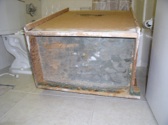
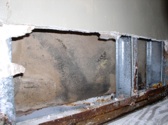
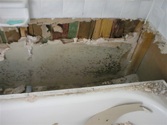
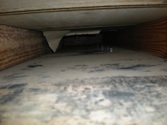
Water is mold’s lifeblood
Water is key culprit in mold growth. Without water, most mold’s cannot grow, which is why it is critical to control moisture in home’s, commercial & school buildings.
Here are some common sources of moisture in property’s.
• Leaks (plumbing and roof leaks are among the most common)
• Central air-conditioning drip pans
• High humidity MOLD & YOUR HEALTH
• liquid spills
• Condensation
• Plants
• Wet carpet
• Water damage to a multi unit complex, this is very common when a connected unit from above or next door has been flooded. Most of the time this will go unnoticed till you start to get mold behind your walls and ceiling.
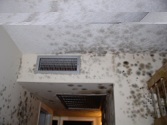
MOLD OFTEN DIRECTLY RELATED TO WATER DAMAGE...
Most mold requires very simple things to grow and exist. It first requires some type of moisture intrusion, or water condensation. If there has been a plumbing leak or roof leak, there is a strong possibility that mold has begun growing. In many cases, it can take only 24-48 hours for the process to begin. Thus the need for restoration.
APR MOLD REMEDIATION TEAM who are trained and certified in Water Damage Restoration will have the knowledge skills, and equipment to deal with the moisture source feeding the mold. Drying equipment which whips up the air with forceful fans should be avoided. It is important to avoid spreading the tiny invisible spores which are designed to remain airborne for hours.
WHERE MOLD CAN BE FOUND
Mold and mildew can be inside your sink , dishwasher cabinets, bathrooms and laundry areas. There is an 86% chance of mold growing somewhere in or near your refrigerator. It can nestle into the microscopic crevices of clothing, furniture fabric and in your carpeting. If you had a roof leak, flood or any water intrusion it can grow in your walls and ceiling without any visible mold spores . There is little doubt that mold spores exist in your air conditioning and heating system ductwork from where mold is continually dispersed throughout your home or building looking for a place to ( plant ) its self and grow. It can be found in your window sills, crawl space, garage, attic and countless other places. Florida has a very humid climate so mold thrives here.
WHY INSPECT FOR MOLD
There are many reasons to inspect your property for mold. First of all, mold is everywhere. There is no escaping it. Though mold is not problematic by default, when indoor mold exceeds levels typically found outdoors, a number of serious problems can occur. Whether your house was inspected less than one year ago, you should be aware that mold can begin at any time and anywhere, no matter how clean you keep your home. If you haven’t had an inspection within the last 18 months, now might be the perfect time to have a professional mold inspection even if there are no visible signs.
Please note: Dead mold may still cause allergic reactions in some people, so it is not enough to simply kill the mold, it must also be removed.
Different mold species can have varying health effects, but it is important to remember that any excessive mold growth needs to be taken care of, regardless of the species.
All insurance claims are processed using our state-of the-art computerized estimating ( Xactimate ) billing software, the same program insurance companies use for disaster claims. Discounts available for non-insurance claims. We offer Mold Remediation at very competitive prices. Our claims department will handle all the necessary paperwork dealing with your insurance company directly.


Mold Lingo: What you should know
When buying a property or parents who want to research mold in their children’s schools need to know how to spot references in work orders and inspection reports. District officials and home inspectors don’t always call it mold.
Sometimes, they use these terms:
• Microbial growth
• Microbial concentration
• Superficial growth
• Fungi
• AMG: Short for Assumed Mold Growth
• VPFG: Short for Visible Presumptive Fungal Growth
• Amplification: Used to signify a higher level of mold indoors than outdoors
